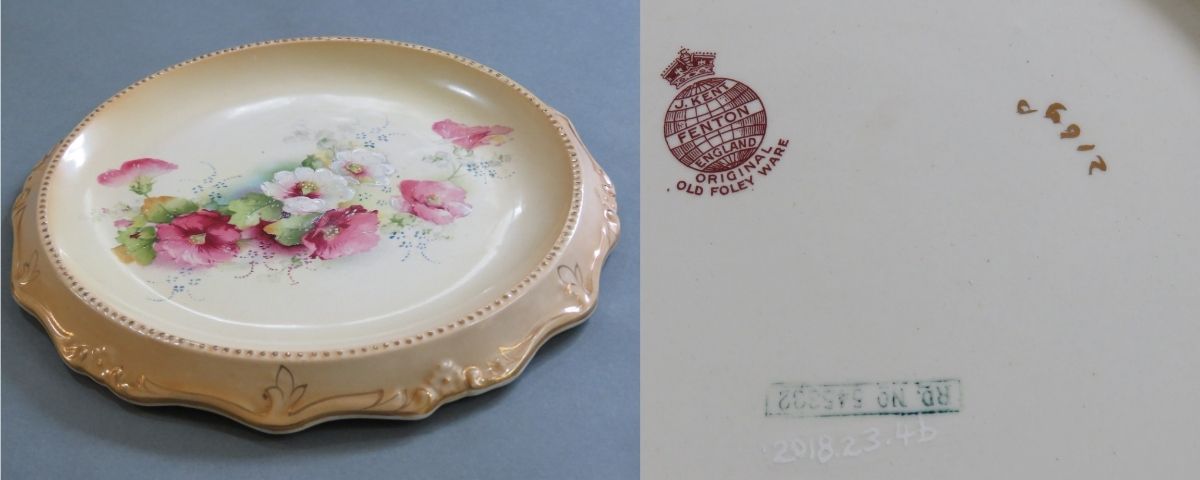Alison Sofield - Volunteer Collections - Whangarei Museum
The Victorians excelled at creating and using implements for all possible occasions especially when it came to household wares. We can’t imagine today what it would be like to have, say a different spoon or fork for every vegetable or fruit. Victorian ingenuity for design knew no bounds. Whangarei Museum holds some splendid items and often these provide our mystery objects on display in the main hall.
Today’s example is a plate designed to hold slices of bread. It looks like an ordinary dinner plate but with a lip or skirt around the edge. This skirt provided an edge to grip when the plate was being passed around the table. In Victorian times there were no pre-sliced breads as we are used to today, so the maid usually sliced up the bread in the kitchen and brought the bread to the table. The bread was usually accompanied by a bread fork with a short handle and three prongs thus ensuring a minimum of handling.

This plate is one of a pair donated by B. Turner who remembered it in use in the Clarke Homestead. Bread plates were made in many styles, usually in china but also in glass. Often they bore the caption, “Give us this day our daily bread.” Sometimes the more well known pottery works of the time such as Royal Doulton and Wedgewood added a bread plate to their basic dinner sets. Today these plates are sought by antique collectors. I recall visiting an antique shop in Auckland some years ago and was surprised to see at least a hundred bread plates on display.
Our plate was made at the Old Foley Pottery works in Fenton, England probably in the late 19th century. This company was formed by James Kent in 1897, where earthenware and porcelain were manufactured. James employed five workmen plus his four sons initially but the company grew quickly and by 1913 became a Limited Company. After James’ death in 1953, his second son Philip took the helm. The business stayed in the family until 1981.
The business changed hands several times in the following years until it was closed in 2008 and the factory was demolished.
In the hundred or so years it functioned, the Old Foley Pottery Works produced many thousands of pieces of domestic china. All classes of English families would have had some examples of this hardwearing, inexpensive china on their dining table. It seems that quite a lot of Old Foley china made its way to New Zealand with early settlers.